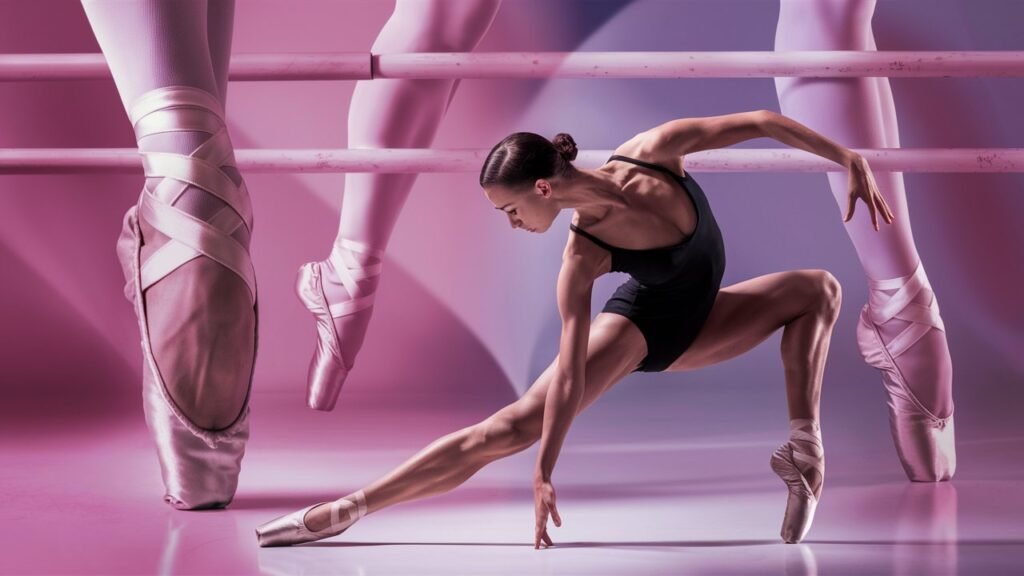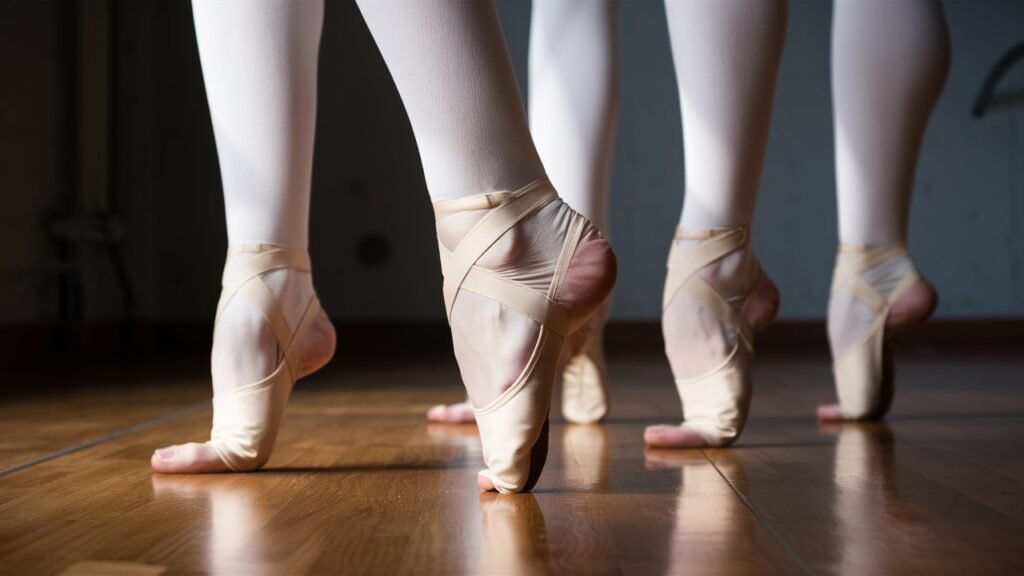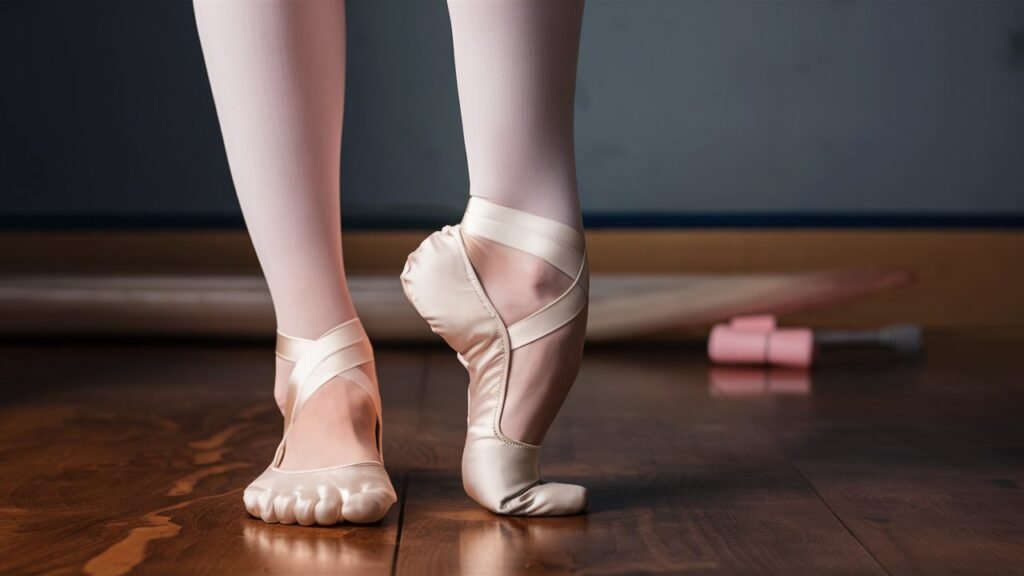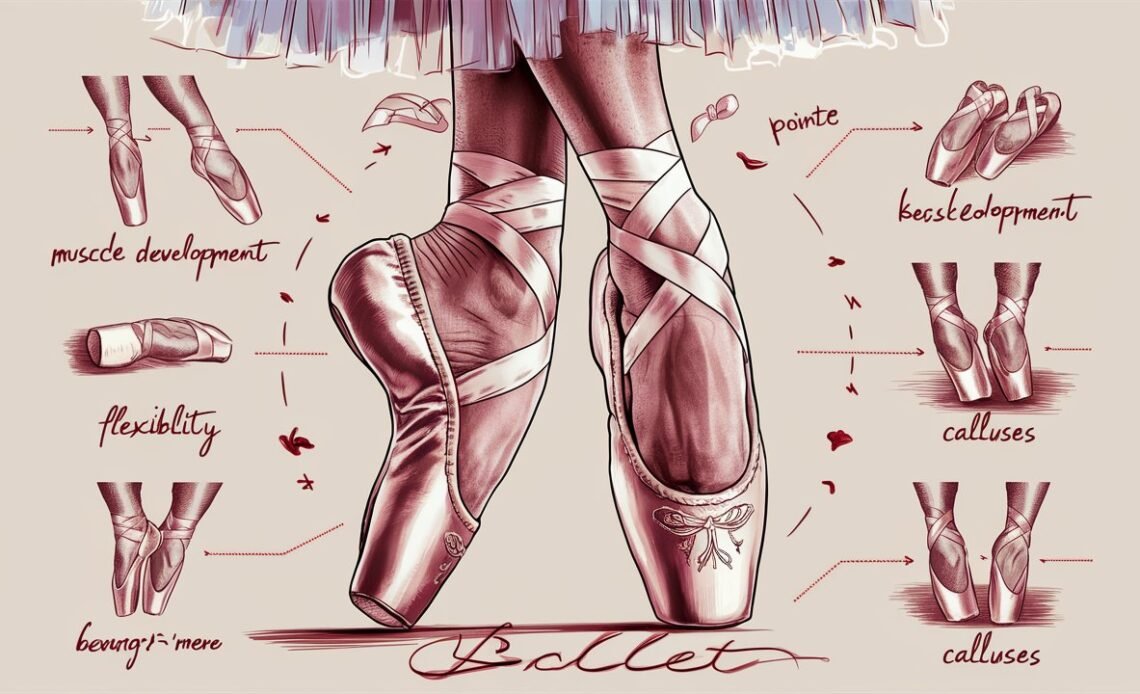Ballet is beautiful and demanding art form that can have significant impact on your feet. When you dance ballet your feet undergo intense physical activity which lead various change and challenges. Understanding how Ballet affects your feet is crucial for dancer of all levels.
Strength and Flexibility
Lets explore how ballet affect your feet terms of strength and flexibility. Ballet requires great deal of strength your feet and ankles as you are constantly balancing on tips of your toes or performing jump and turns. This repeated stress can lead to stronger more flexible feet but also increase the risk of injury if not managed properly.

Wear and Tear
Moreover, how ballet affect your feet evident in wear and tear they experience. Ballet dancers often suffer from blister calluses and bruises due to friction and pressure from their shoes. Pointe shoes in particular can be very harsh on your feet. Sometime causing bruised toenails and even fractures. Consequently dancers need to take extra care of their feet to avoid long term damage.
Structural Changes
Another aspect of how ballet affects your feet potential for structural changes. Continuous ballet training can lead alterations in shape and alignment of your feet. For instance many dancers develop bunions painful condition where big toe leans towards second toe forming bony bump on the side of the foot. This is often due to narrow and tight fitting pointe shoes worn during performances and practice sessions.

Dancing on pointe
Dancers typically dance for number of years before advancing to pointe shoes. By that time they have strengthened and developed their legs, feet and ankles as well as their balance and body alignment.
For most girls the transition to pointe shoes usually happens between ages 11 and 13. Foot bones begin to harden between the ages of 8 and 14, so pointe work isn’t usually begun until feet have ossified or hardened.
Male ballet dancers typically dont dance on pointe. They do more lifting and jumping. This can also lead to foot issues such as Achilles tendonitis shin splints and sprained ankles.
Injury risks for ballet dancing
Common dancing injuries to the feet include:
- Blisters and calluses. These are common when dancing in pointe shoes that haven’t been broken in yet or are not properly fitted or from movement and friction between toes.
- Ingrown toenails. Another common dancing injury this occurs when the corner or edge of the nail grows into surrounding skin.
- Black or broken nails. This is usually the result of repeated impact blisters or overuse.
- Sprained ankles. Ankle sprains are common in dancers from overworking the lateral side of the ankle for multiple hours per day.
- Bunions. These form as result of toes being squished together and tension on the big toe joint.
- Stress fractures. These tiny cracks in bones are due to overuse and may feel worse when jumping or turning.
- Dancer’s heel. Also known as posterior impingement syndrome this injury is sometimes called dancers ankle because it affects the rear of the ankle.
- Morton’s neuroma. This strained nerve causes pain between the toe and the ball of foot.
- Plantar fasciitis. This is puffiness of the tissue that extends from heels to the toes.
- Metatarsalgia. This painful inflammation in the ball of the foot is due to tired.
- Hallux rigidus. This injury affects the joint at the base of the big toe eventually making it hard to move the toe.
- Achilles tendonitis. Caused by overuse of the Achilles tendon this injury can usually can be treated at home but in serious cases the Achilles can tear and require surgery.

Can ballet dancing permanently damage the feet?
- Dancing on pointe can cause number of injuries to the shins ankles and feet. If left untreated certain injuries could eventually lead to permanent damage. These risks are usually only a problem for professional dancers who need to stay on pointe for extended periods of time.
- Some examples of injuries that may lead to damage if left untreated include:
- sesamoiditis which is chronic inflammation and overuse of the bones of the ball of the foot beneath the big toe joint (surgery may be required if untreated)
- corns that become ulcers
- nails that thicken and grow hard skin underneath
- hammer toes
- heel spurs
Due to competitive nature of ballet and fact that roles in ballet performances are hard won dancers may feel they cant take time off due to an injury. However, dancing on an already injured foot can lead to permanent damage that may require surgery to correct.
If you suspect you have foot injury see doctor. They may be able to treat your foot or make you more comfortable as you continue to dance.
Importance of Proper Footwear and Foot Care
Furthermore, understanding how ballet affect your feet include recognizing importance of proper footwear and foot care. Dancers should always wear well fitted shoes and consider using padding or gel insert to reduce pressure points. Regularly stretching and strengthening exercises for your feet and ankles can also mitigate some of negative impact ballet on your feet.

Long-Term Implications
In addition, how ballet affects your feet can be seen in long term implications for your overall foot health. Many dancers experience chronic issues such as plantar fasciitis or Achilles tendinitis from years of intense training. Therefore, its essential to listen your body and seek professional advice if you notice persistent pain or discomfort.
Conclusion
To conclude, knowing how ballet affect your feet can help you take better care of them and enjoy dancing for many year to come. By being mindful risk and proactive your foot care routine. You can minimize negative impacts and maximize benefits of ballet on your feet.
How does ballet strengthen and increase the flexibility of your feet?
Ballet requires a great deal of strength and flexibility in your feet and ankles due to constant balancing on your toes and performing jumps and turns. This repeated stress strengthens your muscles and increases flexibility, though it also heightens the risk of injury if not managed properly.
What are the common wear and tear issues ballet dancers face with their feet?
Ballet dancers often experience blisters, calluses, and bruises from the friction and pressure of their shoes. Pointe shoes can cause additional issues such as bruised toenails and fractures. Proper foot care is essential to avoid long-term damage.
How can ballet lead to structural changes in your feet?
Continuous ballet training can alter the shape and alignment of your feet. Dancers may develop bunions, a condition where the big toe leans towards the second toe, forming a bony bump. This is often due to the narrow, tight-fitting pointe shoes worn during performances and practice.






2 Comments